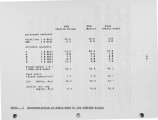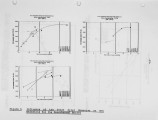| Title |
NOx Reduction Techniques for Rotary Kilns |
| Creator |
Mullinger, P. J.; Jenkins, B. G. |
| Publisher |
University of Utah |
| Date |
1994 |
| Spatial Coverage |
presented at Maui, Hawaii |
| Abstract |
Rotary kilns operate at high temperatures, and therefore have high NOx emissions levels. Whilst, as a group of industrial furnaces they are not significant contributors to the total global NOx problem, these individual high levels obviously attract interest from regulatory authorities. The fundamentally different aerodynamics of rotary kiln flames, means that the techniques that have been developed for NOx control in power boilers and petrochemical operations cannot be applied to kilns. Recent CEMFLAM I trials at IFRF have provided the first comprehensive data sets on NOx generation in kiln type flames. This paper uses that data to compare its applicability to a number of commercially operating kilns and discusses the options for NOx reduction which those trials have highlighted. |
| Type |
Text |
| Format |
application/pdf |
| Language |
eng |
| Rights |
This material may be protected by copyright. Permission required for use in any form. For further information please contact the American Flame Research Committee. |
| Conversion Specifications |
Original scanned with Canon EOS-1Ds Mark II, 16.7 megapixel digital camera and saved as 400 ppi uncompressed TIFF, 16 bit depth. |
| Scanning Technician |
Cliodhna Davis |
| ARK |
ark:/87278/s6gx4f4v |
| Setname |
uu_afrc |
| ID |
7756 |
| Reference URL |
https://collections.lib.utah.edu/ark:/87278/s6gx4f4v |























